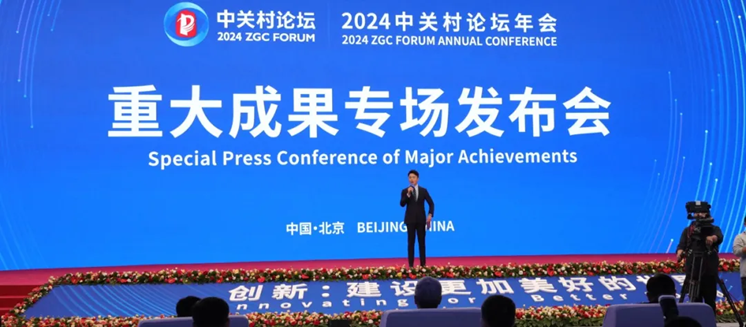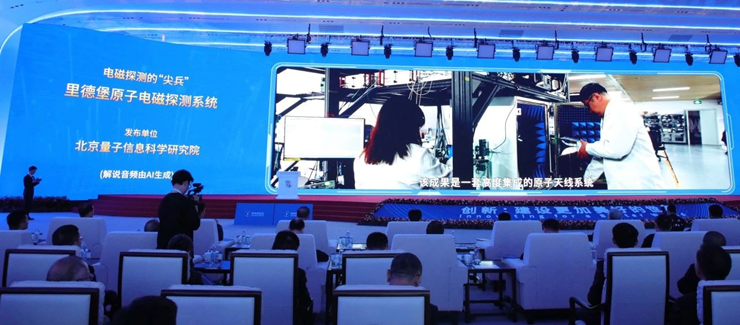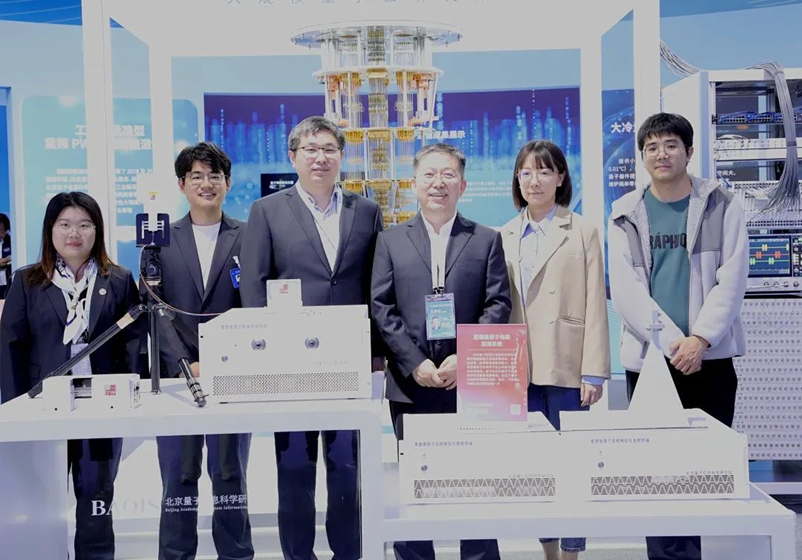The 'Quantum Scouts' are hidden in glass vaper cell, and the world's highest integrated 'atomic antennas' make their debut.
2024/04/29

The scene at the Major Achievements Session of the 2024 ZGC Forum Annual Conference.
Inside a seemingly inconspicuous 20-centimeter-square glass box lies a batch of the most sensitive "quantum sc
outs." When atoms are excited to high quantum states by lasers, they become exceptionally sensitive and can transform into antennas for receiving electromagnetic waves. Leveraging the quantum properties of atoms, Renfu Yang, a professor at the Beijing Academy of Quantum Information Sciences (BAQIS), led a team to develop the world's highest-integrated Rydberg atom electromagnetic detection system. On April 29th, this achievement made its debut at the Major Achievements Session of the 2024 ZGC Forum Annual Conference.

The video release of the Rydberg Atom Electromagnetic Detection System achievement
From traditional dish-like satellite antennas to the rod-shaped antennas protruding from "brick" mobile phones, and now to highly integrated antennas in smartphones... Wireless transmission of information relies heavily on antennas. However, traditional antennas are made of metal, and their presence can cause deformation of the electromagnetic field, leading to less accurate measurements. Additionally, traditional antennas rely on electronic components at the backend to amplify signals after receiving electromagnetic waves. If suddenly exposed to extremely strong electromagnetic fields, such as during intense lightning storms, antennas may be instantly destroyed.
A glass vaper cell with a diameter of only a few centimeters can solve this problem. Inside the glass vaper cell are alkali metal atoms. When they are hit by laser light, the outermost electrons of the atoms are pulled away. “The diameter of an atom is generally on the scale of nanometers, while the laser can move the outer electrons to orbits with a diameter on the scale of micrometers. At this point, the atom is in an excited state and becomes highly sensitive to changes in the surrounding electromagnetic environment,” said Professor Yang. Researchers around the world have been working hard to break through in this technology. However, previously, to operate atomic antenna required a large amount of equipment to be paired with it, “lots of circuits, laser equipment, enough to fill a table.”
Now, in Professor Yang's laboratory, the "atomic antenna" is portable, with all kinds of equipment highly integrated into a standard chassis about 20 centimeters high. With the control software developed by the team, even a layperson can easily adjust it to receive the desired electromagnetic wave signals.

Professor Yang's research team members taking a group photo at the achievement exhibition showcase.
Not long ago, this "atomic antenna" achieved the first-ever international transmission of digital high-definition video at a resolution of 720P. In the near future, it is expected to be applied in the field of meteorology, playing a role in observing rainfall and thunderstorms. "This type of antenna will no longer fear strong lightning strikes, nor will it affect observation accuracy like traditional antennas with metal structures. More importantly, it will be able to detect a wider range of electromagnetic wave frequencies," Professor Yang affirmed. "Its future applications will be revolutionary."
In recent years, BAQIS has continuously produced world-class achievements in the field of quantum science. " BAQIS has given us researchers enough trust. We don't need to undergo annual evaluations, nor are we required to publish a certain quantity of papers," Professor Yang stated. In such a free atmosphere, while under self-imposed pressure, the research team achieved top international research results in just two years. From laboratory research and development to prototype production, close collaboration between researchers and engineers is necessary. The common support platform established by BAQIS also provides strong support for the development of research work.
 中文
中文 Email
Email QCloud
QCloud Log in
Log in
